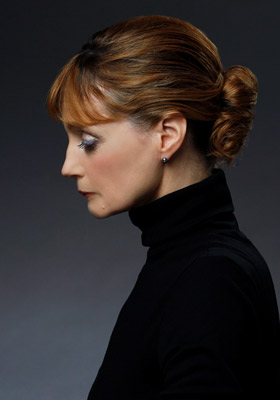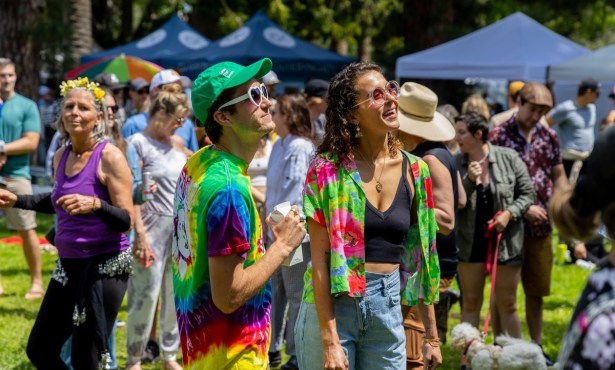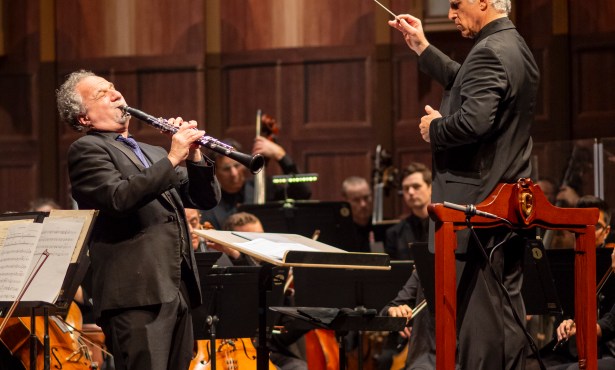Suzanne Farrell Comes to Santa Barbara
Balanchine's Muse Talks Ballet
She’s a household name the world over and the very picture of feminine grace that little girls in ballet class aspire to. For Suzanne Farrell, the dancing life has been a kind of fairytale; the kind that’s full of darkness, as well as light. Born and raised in Cincinnati, Farrell moved to New York City at age 15 to pursue a career as a ballet dancer. Within a year, George Balanchine had discovered her, and soon she was a soloist with the New York City Ballet and the newest muse of the legendary and controversial choreographer. Farrell performed for nearly 30 years – an extraordinarily long career for a professional ballerina – driven in part by an all-encompassing love affair with Balanchine that was at turns destructive and immensely creative.

Now 64 years old, Farrell heads the Suzanne Farrell Ballet, the resident dance company at the Kennedy Center in Washington, D.C., and oversees the Balanchine Preservation Initiative to introduce forgotten Balanchine works to audiences around the world. She recently answered The Indy‘s questions via email.
The company will be performing The Balanchine Couple in Santa Barbara. What is it about the pas de deux that captures something defining about Balanchine’s work? At the heart of every Balanchine ballet is the pas de deux. Each pas de deux creates a different “world.” I call Mr. B’s ballets “worlds” because each one is so different. Each piece creates an entirely different atmosphere with the costumes, music, and choreography. Each step in every pas de deux is unique to that “world.”
What’s something that many people don’t know about Balanchine that you think is important to understanding his legacy? I first knew him just as a picture in Dance Magazine, as the person I wanted to work for. From the day I had my audition in New York, when that picture on the page came to life, when it was difficult to understand what he said because of his accent to the days when he started to teach, and then to the days when we started to do ballets together, there was already a whole history of our spending time together. There was always admiration and respect for each other. We evolved from one dream to another.
Mr. B and I experimented. Otherwise you just repeat what’s already been done. When you’re a dancer it’s natural to want to put your best self forward, and so you look in the mirror and work very hard at showing your best to the audience. But I don’t believe you can be an honest dancer and spectator at the same time. The dynamics of every performance are different: You’ve lived a little longer, the tempos might have changed slightly, your partner, the interaction, the audience, are different. It’s better to work with different options. You have to leave yourself vulnerable to the moment, spontaneous.
Tell me a little bit about the master class the company will be offering in Santa Barbara. What will attendees see or learn? It will be fun. I think it is wonderful for everyone to take ballet classes, at any age. It gives you a discipline; it gives you a place to go. It gives you some control in your life.
Any advice for young dancers who dream of becoming great ballerinas? What does it take? What do you have to give up? As you go on in life studying ballet for many years, you forget what first attracted you. Many dancers begin to feel noble simply because they come to class at all, when since they chose to dance, they should have this wonderful feeling unlike anything else in life: the state of balletic grace. And I caution my dancers and students alike not to focus on being a star or to demand the star treatment, but to remember the stars they had in their eyes that made them want to dance in the first place. As you become experienced and perfect the technique, you have to remain vulnerable and not lose that wonderful innocence, that freshness. [Otherwise] you can express the ballet technically well – but not necessarily very poetically.
Dancers don’t use anything other than who they are in the sense that we are not machines where the volume can be turned up or amplified. We have to do it all visually and energetically. I say to the dancers, ‘Ladies and gentlemen, please turn up the volume in your movement; you have to turn up the volume, the Technicolor in your eyes.’ We are our own technology, our own instruments. There is no cinematographer, no editor, no soundtrack to enhance. You will have days when you don’t balance as long, or you don’t turn as many times, or you can’t jump as high. That’s where your response to music and space comes into play. I want to teach my dancers to have a facility to use another vocabulary, just like a writer searches for a better word. We should have that kind of thesaurus in our technique, the ability to delve deeper into our dance voice. It’s much more visceral, much more vulnerable.
Can you talk a little bit about making the transition from dancer to educator, director, and choreographer? I always needed to move to beautiful music. As a child, I danced in our living room, but would stop if anyone watched; it wasn’t the applause or the attention. I would have been happy dancing even if no one saw me. This meant I never became bored or unhappy with dance. There should always be happiness and comfort in responding to music. This attitude has allowed me to be a better teacher, and to bring fresh energy to the studio and to the dancers.
When I was onstage I knew that I only had to account for myself. How I danced was who I was. I can’t do that now. I have to find more ways of communicating the ballets to my dancers because it’s them out onstage. Every student is individual to me. It’s up to me to find out what they need to have their dancing be their thumbprint. As I’ve said before, there are many layers that make up a person, and sometimes I have to strip some of those layers away in order to find out who they are before rebuilding them – not in my image, but as who they should be.
The process of reviving Mr. B’s lost works under the Balanchine Preservation Initiative has been a fascinating one. As I aspire to remain as true as possible to Balanchine’s original vision. I know that some of these puzzles have missing pieces, but that’s no reason to let these ballets completely disappear. The fragments that remain are still very much enlightening; they’re windows into the evolution of Balanchine’s craft. Enthusiasm for the Balanchine Preservation Initiative has spilled over into my dancers – they’re thrilled to be a part of the process. In rehearsals, they continue to comment on how wonderful these works are; I’m wondering how any of them got lost in the first place.
You strike me as someone who has endured more pressure than almost any other artist I can think of. How do you think that experience has informed who you are today? Yes, I had unhappiness in my life, just like anyone else, but dance never betrayed me. I think it’s a shame when people say, ‘Oh, I’m so tired of dancing.’ You know, life is hard; it’s meant to be a test, but while you’re studying for that test, isn’t it nice to be dancing? I have always lived in the moment, so whatever ballet I was performing was my favorite at the time. Whether I am teaching at Florida State University, working with my own company, or training younger dancers in my summer intensives, each project has its own unique challenges and fascination.
You’re also someone who’s pretty familiar with injury and physical challenges. What can you say about dealing with injury – a theme that often goes un-discussed, but affects nearly every dancer at some point in his or her career? After I had my hip replaced and once I could walk again, I went back to the studio to begin again to learn. I couldn’t get my leg very high off the floor, but what was a temporary limitation became an adventure and I relished every centimeter that my leg went higher. I rediscovered how truly wonderful it was to be able to move and found new ways of moving because I had a different body. You can get very comfortable behind your technique, but some of the most subtle and most profound stagecraft I’ve learned has come from non-dancers, or a dancer who’s not technically so good but does something fresh because they don’t have a technique to masquerade behind. There are many different ways of intuiting life-altering dynamics, and they have nothing to do with how high your leg extends.
What are you most grateful for in your life? I am grateful that dancing brought out in me the person whom I had the potential to become. I think that’s why I loved dancing for its own sake, not just to be a ballerina. The wonderful thing about life is that there will always be variables. You have to see them and be aware of them to know how to react to and appreciate them.
4•1•1
The Suzanne Farrell Ballet will perform The Balanchine Couple at the Granada Theatre (1216 State St.) on Wednesday, October 21 at 8 p.m. For tickets, call 893-3535 or visit artsandlectures.ucsb.edu.



